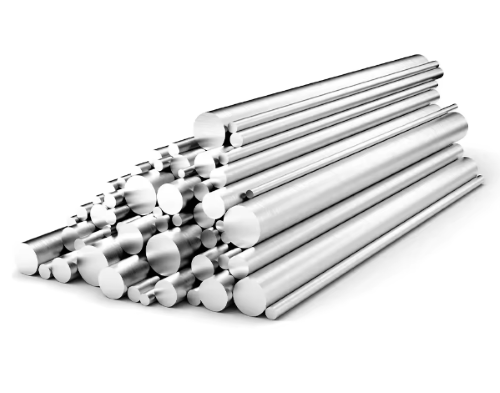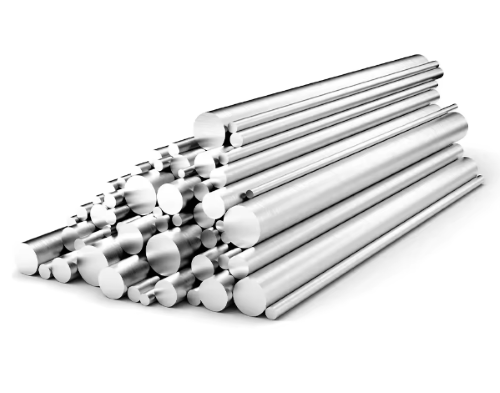
Introduction
Ti-6Al-4V, also known as Grade 5 titanium alloy, is one of the most widely used titanium alloys. It is renowned for its excellent strength-to-weight ratio, corrosion resistance, and biocompatibility, making it a preferred material in various high-performance applications. This article delves into the properties and applications of Ti-6Al-4V, highlighting why it is a material of choice in industries such as aerospace, medical, automotive, and more.

Chemical Composition and Mechanical Properties
Ti-6Al-4V consists primarily of titanium (Ti), with 6% aluminum (Al) and 4% vanadium (V). The alloy also contains minor impurities, including iron (Fe) and oxygen (O). This specific composition imparts a unique set of properties:
| Property | Value |
| Density | 4.43 g/cm3 |
| Tensile Strength | Minimum of 895 MPa |
| Yield Strength | Minimum of 828 MPa |
| Elastic Modulus | 113.8 GPa |
| Hardness | 349 HV |
| Elongation at Break | 10-15% |
| Fatigue Strength | High resistance to fatigue |
Thermal and Physical Properties
Ti-6Al-4V exhibits excellent thermal properties, including a melting point of 1604-1660 °C and thermal conductivity of 6.7 W/m·K. Its coefficient of thermal expansion is 8.6 µm/m·°C, allowing it to maintain structural integrity under thermal stress. The alloy’s physical properties include outstanding corrosion resistance in various environments, from marine to industrial settings, and exceptional biocompatibility, making it suitable for medical implants.
Microstructure and Heat Treatment
The microstructure of Ti-6Al-4V typically consists of a mixture of alpha (α) and beta (β) phases. This structure can be modified through heat treatments to enhance specific properties. Common heat treatments include:
- Annealing: Performed at 700-785 °C, followed by slow cooling to improve ductility and reduce internal stresses.
- Solution Treating and Aging: Involves heating to 940-970 °C, quenching, and aging at 480-590 °C to increase strength and hardness.
Related reading: 3 Types Of Titanium Alloys & Their Uses
Applications
1. Aerospace Engineering:
Ti-6Al-4V is extensively used in aircraft structures and engine components, such as airframes, landing gear, turbine blades, and discs. Its high strength-to-weight ratio and ability to withstand high temperatures make it ideal for these applications.
2. Medical Devices:
The alloy’s biocompatibility ensures its use in medical implants like hip and knee replacements, dental implants, and surgical instruments. It does not cause adverse reactions when in contact with human tissue.
3. Automotive Industry:
In high-performance automotive applications, Ti-6Al-4V is used for engine parts, connecting rods, and exhaust systems. Its lightweight nature helps improve fuel efficiency and performance.
4. Chemical Processing:
The alloy’s resistance to corrosion makes it suitable for heat exchangers, reactors, and other equipment in chemical processing plants, where it can withstand harsh chemicals and high temperatures.
5. Marine Engineering:
Ti-6Al-4V is employed in marine environments for parts like propeller shafts and submarine components due to its excellent resistance to seawater corrosion.
6. Sporting Goods:
High-performance sporting equipment, including bicycle frames, golf clubs, and tennis rackets, benefit from the alloy’s lightweight and durable properties.
7. Energy Sector:
Components in gas turbines and offshore drilling equipment utilize Ti-6Al-4V for its ability to perform in high-temperature and corrosive environments.
Surface Treatments and Welding Techniques
Various surface treatments can further enhance the properties of Ti-6Al-4V. Anodizing increases corrosion resistance and allows for aesthetic finishes. PVD coating enhances wear resistance and reduces friction. Shot peening induces compressive stresses on the surface, improving fatigue strength.
Welding and joining techniques for Ti-6Al-4V include several advanced methods. TIG welding is preferred for its precision and control. Laser welding offers high precision with minimal thermal distortion. Friction stir welding is ideal for joining large components with superior mechanical properties.
Conclusion
Ti-6Al-4V alloy, with its remarkable properties and versatility, is a cornerstone material in modern engineering and technology. Its applications span from critical aerospace and medical devices to high-performance automotive and marine components. The alloy’s unique combination of strength, lightweight, and resistance to corrosion and high temperatures ensures its continued prominence in various high-demand fields.
As technology advances, Ti-6Al-4V will likely play an even more significant role in pushing the boundaries of innovation and performance. For more information, please check Advanced Refractory Metals (ARM).

